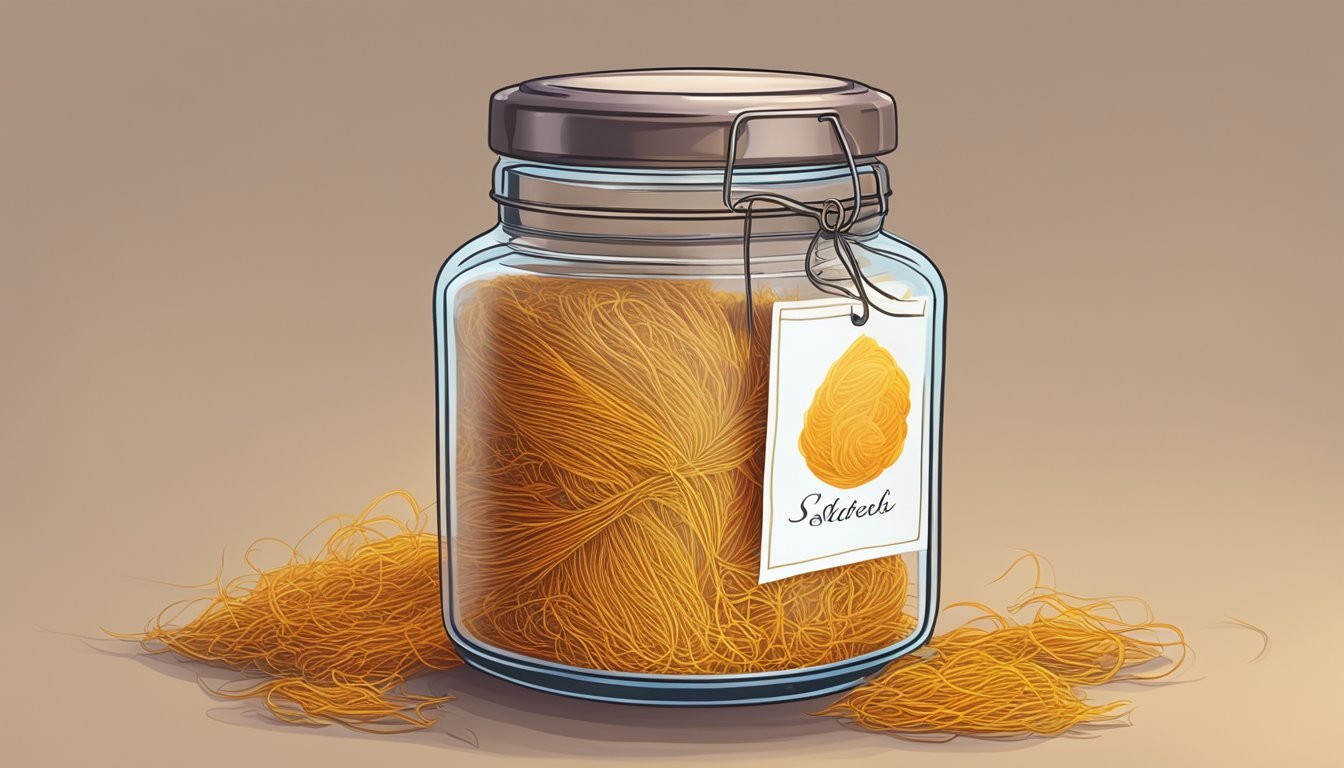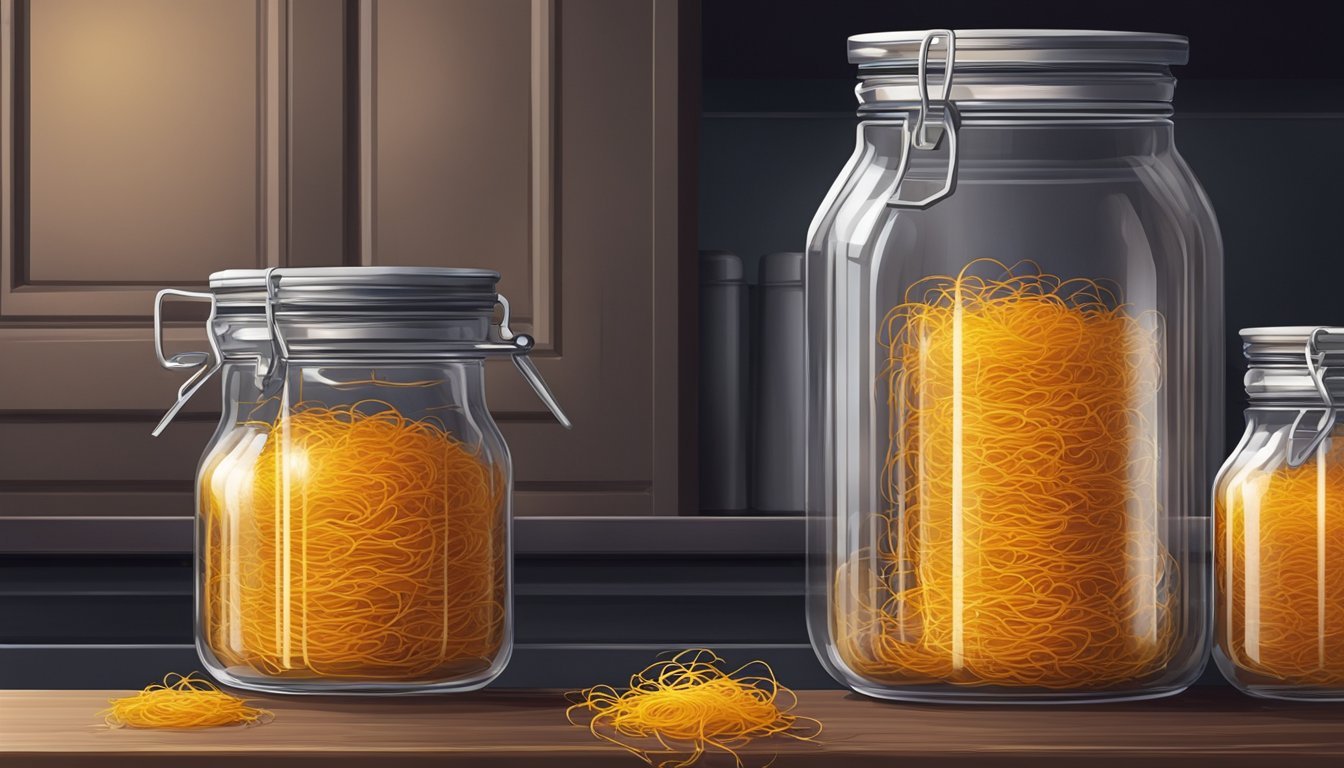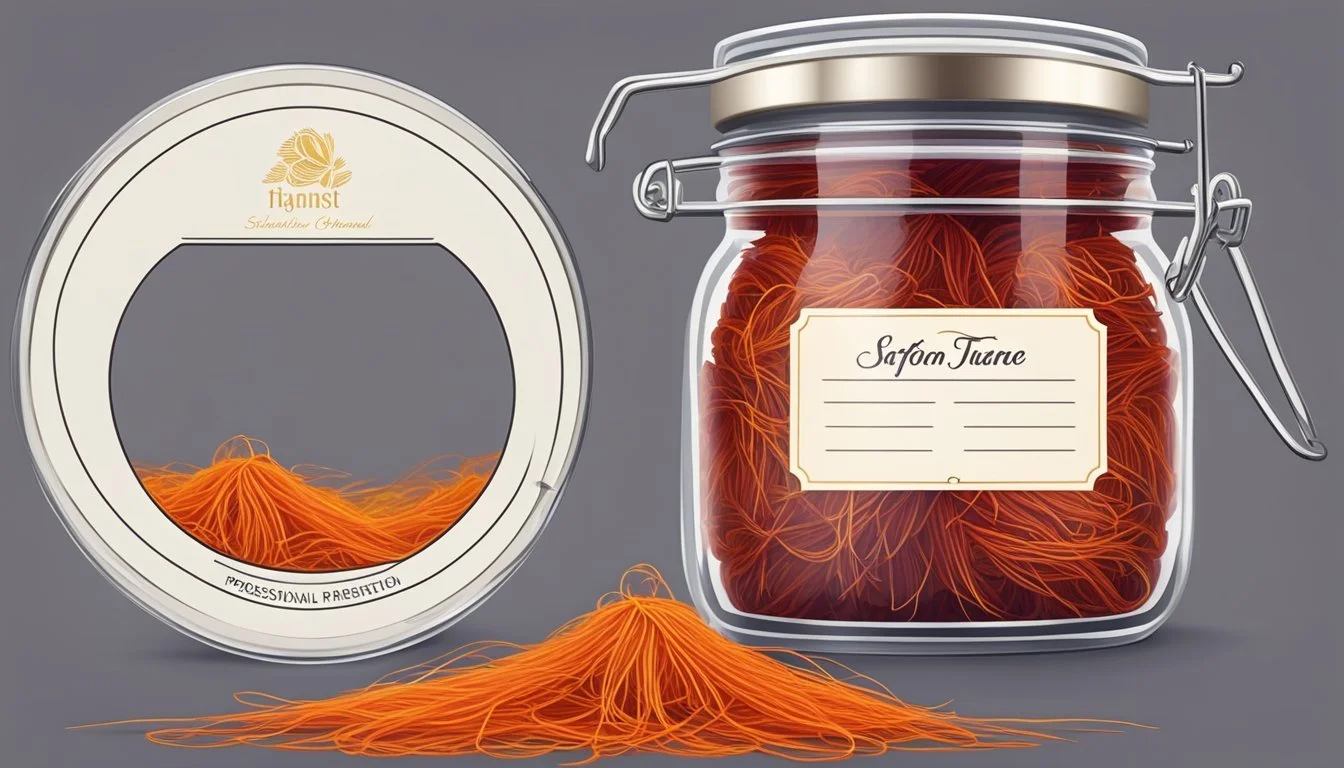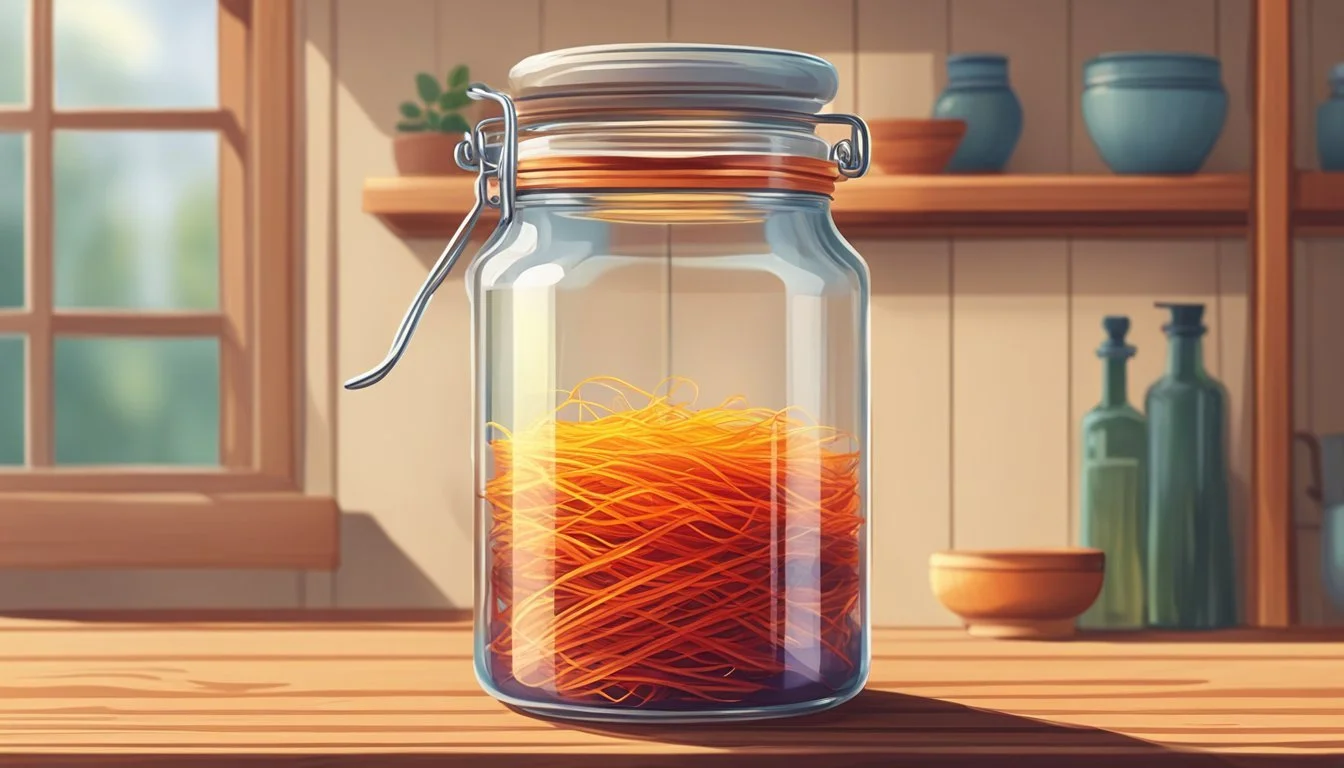How Long Do Saffron Threads Last?
Understanding Shelf Life and Storage Tips
Saffron, recognized as one of the most expensive spices by weight, is highly valued for its distinct flavor, aroma, and coloring capabilities. The shelf life of saffron threads, a crucial consideration for both chefs and home cooks, depends largely on storage conditions. Properly stored, saffron threads can remain potent for up to three years. The quality of saffron threads diminishes over time; they will not spoil in the traditional sense, but their vibrant flavor and aroma do fade, rendering them less effective in culinary applications.
To preserve the quality of saffron threads, storage is key. These delicate threads should be kept in an airtight container to protect them from moisture and stored in a cool, dark place to guard against light, which can degrade their quality. Since saffron is sensitive to environmental factors, it's recommended to wrap the container in foil for added protection from light. Ideally, saffron should be used as close to the purchase date as possible to take full advantage of its signature taste and aromatic profile.
Understanding Saffron
Saffron, derived from the Crocus sativus flower, is esteemed for its distinctive color, aroma, and flavor. This section delves into its origins, pure versus ground forms, and culinary applications.
Origins and Characteristics
Saffron, the most labor-intensive spice to harvest, originates from the Crocus sativus plant. Each flower produces only three red stigmas, which are handpicked and dried to create the valued threads known for their intense color and rich flavor. Harvesting saffron is a meticulous process due to the delicate nature of the stigmas and the timing required for optimal quality.
Differences Between Pure and Ground Saffron
Whole Saffron Threads:
Color: Deep red, a sign of high quality
Flavor Profile: Subtly sweet and floral
Shelf Life: Retains potency for up to three years when stored properly
Ground Saffron:
Preparation: Powdered form of stigmas
Flavor Profile: Prone to losing potency quickly compared to whole threads
Shelf Life: Best used within six months to a year
Whole saffron threads are typically more reliable for their quality and longevity. Ground saffron, although convenient, is more susceptible to adulteration and may contain impurities reducing its aroma and dye capabilities.
Saffron in Culinary Use
Saffron is a versatile spice esteemed in cooking for both savory dishes, like rice, paella, and risotto, and in sweet preparations due to its unique flavor profile that complements a wide range of ingredients. Only a small amount is required to impart its distinctive taste and striking golden color, making it an essential yet economical addition to various recipes. It's also known for several health benefits, often utilized in traditional medicine. When cooking, saffron's flavor is best extracted by steeping the threads in warm liquid before adding it to dishes.
Storing Saffron
The longevity and quality of saffron threads heavily depend on the storage method employed. Ensuring saffron is stored correctly will preserve its potency and freshness for an extended period.
Importance of Proper Storage
Proper storage is crucial as it protects saffron from elements that can diminish its quality, such as moisture, light, and air. Saffron is known for its potent flavor and aromatic properties, and these attributes can be maintained for years when stored correctly.
Choosing the Right Container
Saffron should be kept in an airtight container to prevent exposure to air, which may lead to a loss in flavor and aroma. Containers made from materials that do not allow light to pass through, such as dark glass or non-transparent material, are most suitable.
Container Options:
Glass jars with tight seals
Metal tins with secure lids
Original packaging wrapped in foil
Best Storage Locations
Selecting an optimal location to store saffron involves finding a cool, dark place. Direct sunlight and heat are detrimental to saffron's quality, thus a pantry or cupboard away from heat sources is preferable.
Optimal Storage Locations:
Pantry: A dry place away from the stove or oven
Cupboard: Preferably one that is not exposed to heat from appliances
Refrigerator: A suitable option for long-term storage in airtight containers
Freezer: For the longest shelf life, ensure it's perfectly dry and well-sealed before freezing
Remember, environments with temperature fluctuations and high humidity levels are to be avoided, to prevent spoilage and degradation of the saffron's aromatic compounds.
Factors Affecting Shelf Life
The longevity of saffron threads is contingent upon environmental conditions, particularly their exposure to light, air, and temperature. Proper storage is key to preserving saffron's quality.
Saffron's Sensitivity to Environment
Saffron threads are highly sensitive to environmental factors. They can absorb moisture from the air, which promotes mold growth and degrades quality. It is crucial to maintain a consistent, low-humidity environment to ensure saffron's longevity.
Moisture & Humidity: These two are critical factors; saffron must be kept in conditions that minimize exposure to them.
The Impact of Air, Light, and Heat
Exposure to air, light, and heat has a significant impact on the potency of saffron threads.
Air: Oxygen can lead to the oxidation of saffron, which diminishes its flavor. Storing saffron in an airtight container is essential.
Light: Both sunlight and artificial light can cause saffron to fade and lose flavor. It's important to store saffron in a dark place, wrapped in foil or inside an opaque container.
Heat: Saffron should be stored away from heat sources to avoid degradation of its delicate compounds.
Keeping saffron in cool, dark, and dry conditions will significantly extend its shelf life.
Saffron Shelf Life
When stored properly, saffron can retain its desired properties for a significant period. The key to preserving its color, flavor, and aroma lies in controlling exposure to light and moisture.
Typical Duration and Signs of Aging
Saffron threads, if kept in ideal conditions, typically last up to three years. The signs of aging include:
A faded color, changing from a vivid red to a duller hue.
A loss of strong aroma; fresh saffron has a distinctive smell that weakens over time.
A reduction in flavor potency; aged saffron will not impart the same level of taste to dishes.
The presence of mold or a musty smell indicates that the saffron has been exposed to too much moisture.
Determining Freshness and Quality
The quality and freshness of saffron can be determined by:
Color: A bright red indicates a high-quality and fresh product.
Aroma: A fresh and potent saffron will have a strong and characteristic smell.
Texture: Saffron should be dry to the touch when freshly harvested and properly dried.
Storage: Saffron should be stored in an airtight container to retain freshness. A darker environment helps to preserve its quality as well.
By adhering to these guidelines, one can ensure the longevity and efficacy of saffron threads, be it for culinary or other uses.
Preserving Saffron's Quality
Proper storage conditions are paramount to maintaining the integrity of saffron threads' flavor, aroma, and color. Adherence to the best storage methods can greatly extend the spice's shelf life.
Best Practices in Saffron Storage
When storing saffron, it's crucial to ensure that the environment is conducive to its longevity. Saffron storage should be in a cool, dark place, which helps prevent degradation of the compounds responsible for its distinct properties. Thus, a pantry or a cupboard away from heat sources like stoves or ovens is ideal. Furthermore, saffron should be kept in an airtight and opaque container to shield it from moisture and light exposure—both of which can dramatically reduce its quality. Dry conditions are essential; any exposure to humidity can prompt mold growth or loss of potency.
Using Saffron Before It Expires
While saffron can last up to 2 to 3 years past its sell-by date if stored properly, one should always consider the harvest date. The fresher the saffron at the time of purchase, the longer its qualities can be preserved. Regularly checking the saffron can be a good practice to ensure it has not developed mold or a noticeable change in aroma. When using saffron in cooking, to maximize flavor, it is best to utilize it before the appearance of such signs, thus ensuring dishes receive the full benefit of this premium spice. Keeping track of the expiration date is also advised to use the saffron when at its best, ensuring recipes are enhanced by the signature flavor and color of this esteemed spice.
Additional Considerations
In the discussion about the shelf life of saffron threads, it's important to consider not just storage but also purchase quantities, effective alternatives, and the broader cultural significance of saffron.
Buying Saffron in Bulk versus Small Quantities
Purchasing saffron in bulk may seem cost-effective due to the spice's high price; however, given its optimal flavor duration of up to three years under ideal conditions, buyers should assess their usage rates. Saffron's flavor longevity is tied directly to storage conditions: It should be kept airtight, away from light and moisture. In Europe and Asia Minor, regions known for the Crocus sativus flower from which saffron is harvested, buying in bulk may be more common due to regional demand and access.
Substitutes and Alternatives
Saffron's unique flavor is challenging to replicate, but alternatives may suffice in some recipes. These include:
Turmeric: Offers a vibrant color with a different flavor profile.
Safflower (Carthamus tinctorius): Sometimes labeled as "safran" to provide saffron's color without its distinctive taste.
Paprika and Cumin: Can be used for their coloring and earthiness but will alter the recipe's flavor significantly.
These substitutes do not mimic saffron’s unique flavor but can be used when saffron is unavailable or when seeking cost savings.
Cultural Significance and Uses Beyond Cooking
Saffron boasts roles beyond the culinary world. Culturally significant, it has been used:
In perfumes due to its aroma.
As a coloring agent in both historical and contemporary fabric dyeing practices.
Symbolically in various ceremonies across different cultures.
Its applications in such wide arenas underscore the need to understand appropriate storage and purchase sizes to maintain saffron's potency for all its uses.
Advanced Tips
When aiming to maximize the longevity and potency of saffron threads, one can employ several advanced storage and utilization techniques.
Freezing Saffron for Longevity
Freezing saffron threads can be an effective method to preserve their maximum flavor and potency over time. They should be sealed in an airtight container or heavy-duty freezer bags to prevent moisture and freezer burn. The key to freezing saffron is ensuring the spice is completely dry before storage to prevent ice crystals from forming, which can degrade the quality.
Reviving Saffron's Potency with Hot Water
If saffron threads have lost some of their potency, soaking them in hot water can help to revive their flavor profile. Steep the threads in hot, but not boiling, water for 5 to 10 minutes before use. This process not only rehydrates the spice but also releases the flavorful ingredients, making it more effective for use in dishes.
Method Description Hot Water Soak Steep threads for 5-10 mins to enhance flavor and potency.
Innovative Culinary Applications
Saffron has diverse culinary applications beyond traditional dishes. Its vibrant hue can serve as a natural dye in cakes and bread, adding a visually appealing element. Saffron's flavor profile can also enhance the mood of a dish, giving a luxurious twist to even simple recipes. Experimenting with saffron in different culinary contexts can reveal new dimensions of its flavor.
Culinary Use: Adds natural dye & unique flavor to baked goods.
Mood Enhancer: Elevates the sensory experience of dishes.








